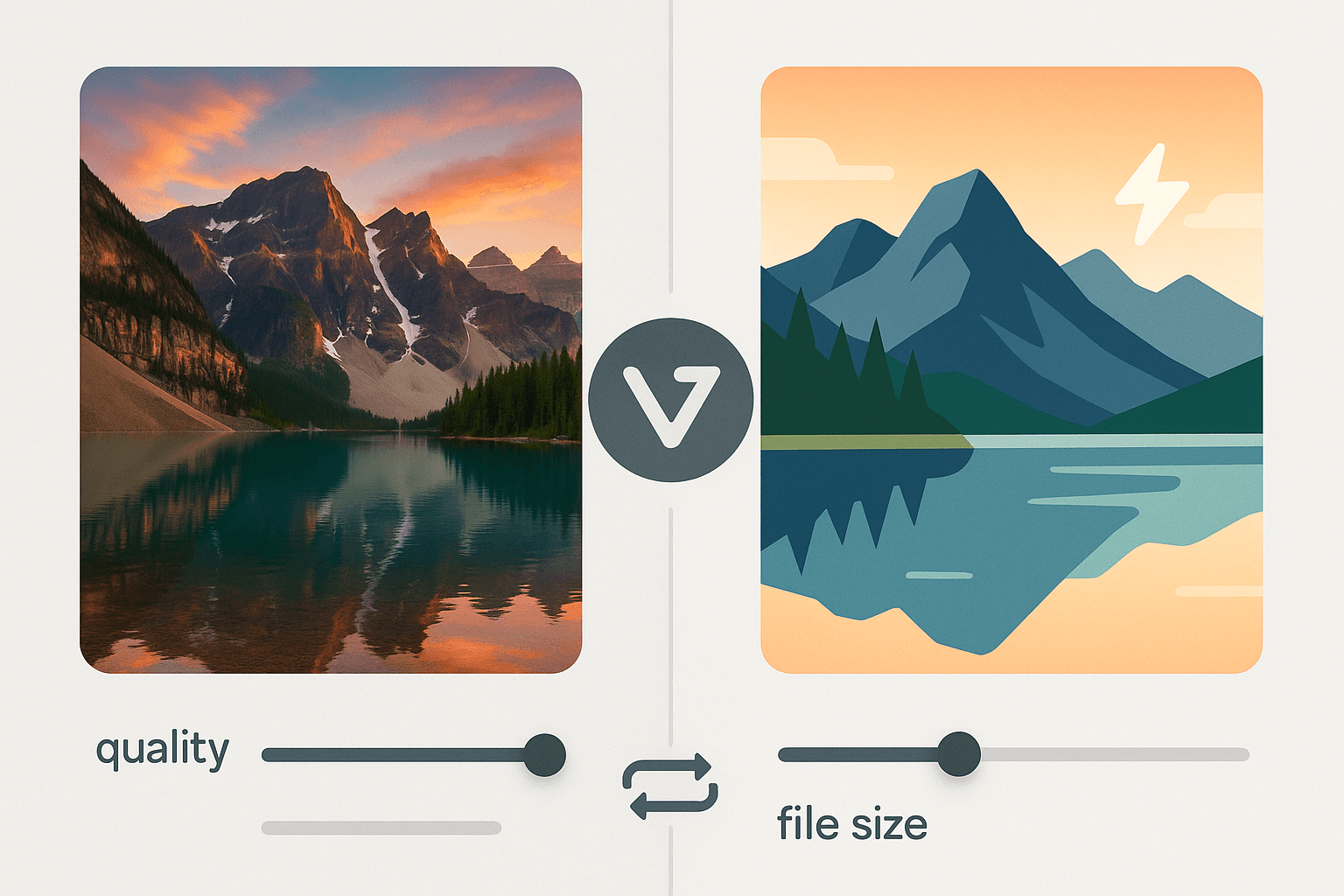How to Balance Image Quality and Performance for the Web
Discover how smart image compression and optimization techniques help balance image quality with exceptional site performance.

In today’s visually-driven digital landscape, striking a balance between image quality and website performance is critical. While stunning, high-resolution visuals enhance user experience and engagement, they often come at the cost of slow load times, increased bandwidth consumption, and bloated storage needs.
These challenges can negatively impact user satisfaction, conversion rates, and SEO rankings.
Manually optimizing each image—compressing files, tweaking formats, and resizing for various devices—is not only inefficient but also prone to errors. For most teams, this manual process isn't sustainable, particularly at scale.
The key to overcoming these challenges is automated and intelligent image optimization. Here’s how modern image compression and optimization practices can help you achieve both excellent visual quality and robust performance effortlessly:
Intelligent Compression Tailored to Your Needs
Effective image optimization isn't a one-size-fits-all process. Instead, each image should be evaluated based on its purpose, context, and delivery platform. A smart system analyzes each asset, applying precisely the right compression settings based on usage.
For web delivery, intelligent compression techniques significantly reduce file sizes without compromising visual clarity. For high-quality assets intended for print or high-resolution displays, the compression remains minimal, preserving image integrity.
The outcome is leaner, faster-loading images tailored specifically to their end-use scenario.
Selecting the Optimal Image Format Automatically
The choice of image format significantly influences performance. Modern formats like WebP and AVIF offer substantial size reductions compared to traditional JPEGs and PNGs, without noticeable quality loss. However, manually managing these formats for different browsers and devices can be daunting.
An advanced optimization system automatically detects the user's browser and device, delivering the most efficient image format seamlessly. Whether it's AVIF for Chrome, WebP for Safari, or JPEG as a universal fallback, the appropriate format is dynamically selected and delivered, ensuring optimal speed and compatibility.
Flexibility and Control When Needed
Every project has unique requirements. Sometimes you need superior quality for hero images or marketing banners, and sometimes a lighter, quicker-loading thumbnail will suffice.
Ideal image optimization solutions offer flexibility through simple configuration options or URL parameters. This allows you to fine-tune compression levels and select image formats tailored specifically to your audience or campaign needs—without overwhelming technical complexity.
Maintaining a Single Source, Generating Optimized Variants
Managing multiple image variants can quickly become a logistical nightmare. An ideal optimization system maintains one master image as a source while dynamically generating and caching optimized variants based on your requirements.
This approach eliminates duplicate files, confusing naming conventions, and storage redundancy. Each optimized variant is created only once, cached efficiently at global edge servers, and instantly available for future requests, significantly improving performance and reducing latency.
Scalable and Consistent Optimization
Whether your team handles dozens or thousands of images, scalability is essential. The optimization process should remain consistent and reliable regardless of volume, ensuring that every image meets the same high standards without manual intervention.
An intelligent, automated system ensures that images are always optimized efficiently, regardless of the scale, helping your team focus less on managing images and more on delivering high-quality content and creative value.
Conclusion
You don't have to sacrifice visual quality for faster load times or reduced bandwidth. Modern image optimization methods provide the perfect balance, offering visually appealing images while maintaining peak performance across devices and networks.
If you’re looking for a platform that incorporates all these essential optimization features, Vyso is one option offering advanced image optimization capabilities.
Vyso provides these features in its free tier, allowing you to experience firsthand the improvements automated image optimization can bring to your projects.
Be among the first to experience Vyso DAM
Our powerful digital asset management platform is launching soon. Join our waitlist today to get early access and special launch offers.
Join the Waitlist